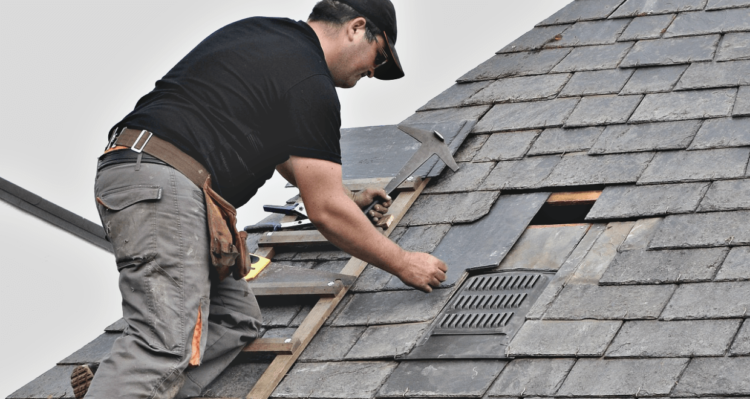Fix Rooftops In Simple Steps With Less Cost
If you're searching for a leak, start by looking upward from the spots on the roof. Roof penetrations are the first items to check for.
Jan 25, 202221 Shares1013 Views

If you're searching for a leak, start by looking upward from the spots on the roof. Roof penetrations are the first items to check for. The most prevalent cause of leaks is items that breach the roof. In reality, even on older roofs, leaks in open sections of continuous shingles are uncommon. Plumbing and roof vents, chimneys, dormers, and anything else that protrudes through the roof are examples of penetrations. They might be several feet above, to the right or left of the leak. If you have access to your attic, the quickest way to find evidence of a leak is to go up there with a flashlight and check for it. Water stains, black spots, and mold are all possibilities. However, if access is difficult or you have a vaulted ceiling, you'll have to climb up onto the roof and investigate the suspect.
How To Stop Water Leakage From Roof
Is there water leaking through the concrete roof that you don't want? While this is concerning, keep in mind that you are not alone in coping with such issues. Concrete commercial roofs are prone to damage, which leads to moisture retention and eventual leakage. This isn't to say that concrete roofs aren't useful. They, like any other roofing system, have benefits and drawbacks. Our current goal is to teach building owners how to prevent water leaks from concrete roofs. Proper and frequent roofing care can help you get the most value out of your investment by extending the life of your home. Here are some tips to stop water leakage from the roof.
Find The Leakage Source
Finding the cause of water leaks from a concrete roof is the first step. Examine the whole roof surface, keeping an eye out for ponding water and the plumbing lines. You may also look at the sides of your building, the drainage lines, and other areas. These are the most prevalent leakage sources.
A roof inspection is a practice carried out by expert roofing contractors as a safety reminder. Accessing your business roof on your own is dangerous. If you wish to conduct an inspection, you may begin with a visual examination. If you need to access high locations, however, don't instantly climb onto the roof. Always seek the advice of concrete roofing professionals to prevent accidents and further property damage. They have the necessary training and skills to identify and address issues.
Fill Cracks
As a result of normal wear and tear, concrete becomes prone to fractures and holes. Water may seep into these areas, perhaps causing further leaks. Minor roof repairs are possible in certain less difficult circumstances.
You'll need mortar or roof cement, roof primer, and an elastomeric sealer for this project. Make sure the whole roof surface is clean before proceeding. A pressure washer may be used to remove all types of debris and filth from the area, such as dust, mud, twigs, and leaves. The next step is to use mortar or roof cement to fix the gaps or holes. Apply a roof primer to finish the job. Then wait for it to dry fully. Apply an elastomeric sealer to the cracks, holes, corners, and other damaged areas after that. The next day, you may apply a second layer to strengthen the sealer.
If you want to follow these directions, you'll need to do some further research beforehand. Because these items include chemical elements, careful handling is required. Consult your local roofing contractor for the correct suggestions for your safety and peace of mind. While these easy steps may assist in the prevention of water leaks, they are not a long-term solution.
Regular Professional Maintenance
We would like to underline the need for routine maintenance on a regular basis. This should be done at least twice a year. There are significantly more intensive maintenance processes in addition to standard inspections and cleaning.
Buildings are often tall and big, making them difficult to enter, particularly if you are untrained. For these reasons, you should have a business roofing partner check and examine your concrete roofing system. You must report any roofing-related problems you may have so that they may be appropriately addressed.
There's nothing wrong with getting your hands dirty on roof repair projects. It should, however, always be done under the guidance of a roofing professional. Always put your own safety first. Furthermore, experienced roofers are always willing to help you if they have the necessary licenses, tools, and equipment, as well as the necessary abilities.
How Can I Fix My Roof With No Money?
Submit a Grant Application. The Weatherization Assistance Program is a standard award for roof repair and replacement. Financial aid is also available under the Section 504 Home Repair Program. Consider the US Department of Agriculture's Very Low-Income Housing Repair Program.
Can I Repair My Roof Myself?
The reality is that, with the aid of the many DIY websites, anybody can fix their own roof. Roof replacements for residential homes normally take two days: the first day is spent removing the old roof, and the second day is spent installing the new one. Depending on the size of the roof, another day or two may be required.
Conclusion
Small cracks in shingles may cause decay, a leaky roof, and other damage for years before you discover the apparent indicators of a leak. You could come across holes from a satellite dish, antenna mounting brackets, or anything else. Roofing repair nails that are exposed or misaligned should be removed and the holes filled. Small holes are easy to repair, but the solution isn't to fill the hole with caulk. You'll use flashing to repair the leaking roof.
Latest Articles
Popular Articles